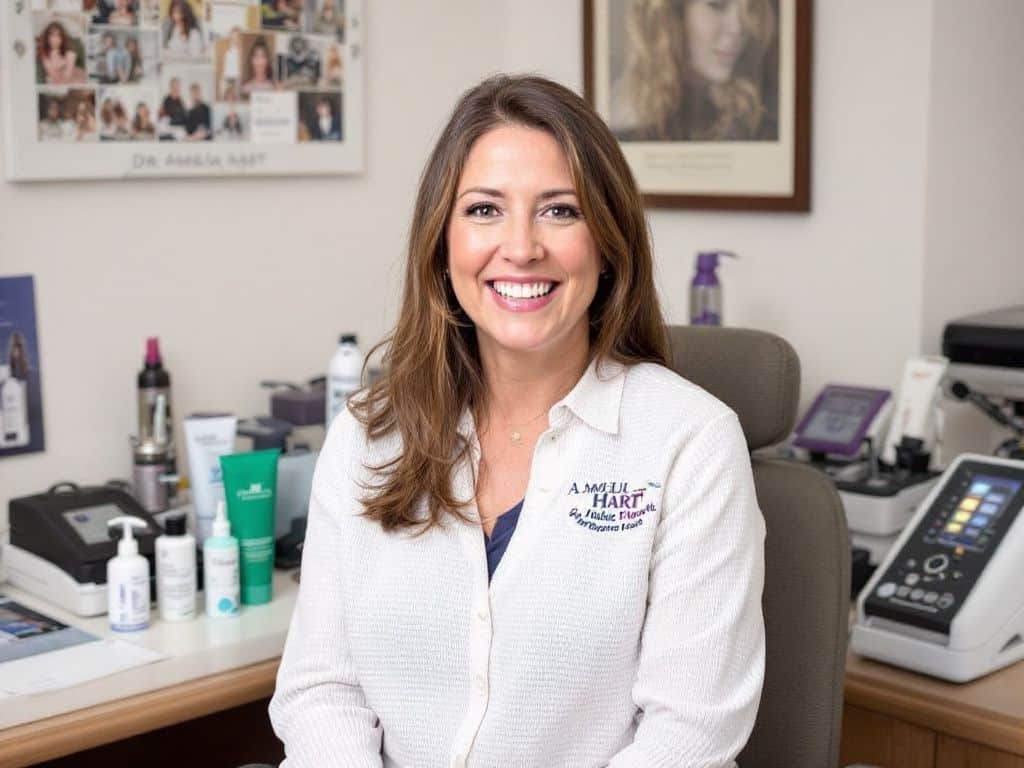
In the world of hair care, trichologists stand out as meticulous scientists dedicated to understanding every strand on your head. As we delve into the specialized field of trichology, we uncover insights from leading hair scientists that unravel the complexity and wonders of hair health. This expert interview presents seasoned opinions from dermatologists who often collaborate with trichologists, offering advice with precision and scientific backing.
The Science of Hair with Trichologist Dr. Amelia Hart
Dr. Amelia Hart is a distinguished trichologist with over 20 years of experience in diagnosing and treating hair and scalp disorders. Her work integrates research with hands-on expertise to deliver transformative hair health solutions. Join us as Dr. Hart offers a glimpse into the rigorous science behind her craft and provides advice relevant to anyone keen to improve their hair health.
Unravelling Hair Structure: The Foundation of Expertise
Understanding hair structure forms the cornerstone of any trichologist’s practice. Hair is composed of keratin—a resilient protein—arranged in layers. Dr. Hart elucidates, “The hair strand consists of the cuticle, cortex, and medulla. Each layer plays a vital role in the hair’s appearance and strength.”
- Cuticle: The outermost layer features overlapping cells that protect inner structures. It’s crucial for maintaining moisture and protecting hair from environmental damage.
- Cortex: This middle layer dictates elasticity, strength, and color as it houses melanin, the pigment responsible for hair color.
- Medulla: Often absent in fine hair, this innermost layer remains a subject of study regarding its exact role in hair structure.
🧬 **Research Insight:** According to a study published in the Journal of Cosmetic Science, the structural integrity of the cuticle is directly linked to hair’s resistance to fracture. Daily habits that preserve the health of the cuticle, such as using mild shampoos and conditioners, help maintain the robustness of this protective layer.

Diagnosing Common Scalp Disorders: A Trichologist’s Perspective
Hair health often starts at the scalp. Dr. Hart explains, “Many clients come with concerns about hair loss or scalp irritation. Diagnosing these conditions accurately requires understanding underlying factors such as genetics, lifestyle, or even diet.”
Chronic Conditions in Focus
- Alopecia Areata: An autoimmune condition where white blood cells attack hair follicles, leading to hair loss. Early diagnosis improves treatment efficacy, often involving steroid injections or topical immunotherapy.
- Seborrheic Dermatitis: A common inflammatory condition causing dandruff, addressed through medicated shampoos containing ingredients like ketoconazole or zinc pyrithione.
- Psoriasis: Characterized by red, flaky patches on the scalp. Treatments often include topical corticosteroids and vitamin D analogs.
🗂️ **Case Study:** A notable case involved a patient with severe dandruff misdiagnosed with seborrheic dermatitis. A detailed scalp analysis revealed an unusual fungal infection, and appropriate antifungal treatment led to full recovery within weeks.
Data-Driven Insights: Nutritional Impact on Hair Health

Nutrition is another pivotal aspect trichologists examine. “A well-balanced diet can significantly influence hair health,” remarks Dr. Hart. Essential fatty acids, vitamins, and minerals support keratin production and hair follicle health. For instance, omega-3 fatty acids boost hair density, while biotin strengthens hair.
📊 **Industry Data:** Comprehensive research by the International Journal of Trichology highlights that iron deficiency is a leading cause of hair loss among women. Ensuring adequate intake of iron-rich foods, such as spinach and red meat, can mitigate such risk factors.
Advanced Treatments and Technologies: What’s New in Trichology?
“The technological evolution in hair treatment is remarkable,” notes Dr. Hart. Advanced procedures like Platelet-Rich Plasma (PRP) therapy use growth factors to stimulate hair growth. Lasers are another frontier, increasingly used for conditions like psoriasis or pattern baldness through controlled phototherapy.
🔬 **Technical Walkthrough:** PRP involves extracting plasma from a patient’s blood, rich in platelets, which are natural sources of growth factors. When injected into the scalp, PRP shows promising results in rejuvenating dormant follicles and increasing hair count.
Best Practices and Professional Advice: Maintaining Healthy Hair

Dr. Hart emphasizes the importance of routine for maintaining hair health. “Consistency in care is key,” she advises, recommending regular trims, choosing appropriate hair products, and reducing heat exposure.
- Protective Styling: Keep hair ends off damaging surfaces. Styles such as braids or twists can preserve the cuticle integrity over time.
- Product Insights: Select shampoos and conditioners suited to your hair type. Hypoallergenic and sulfate-free products are excellent choices for sensitive scalps.
- Avoid Over-Processing: Minimize the use of bleaches and harsh coloring agents that can lead to cuticle damage.
Closing Thoughts: The Expertise Behind Every Strand
As we wrap up this expert interview, it’s evident that trichology is as much about science as it is about care. With professionals like Dr. Hart leading the way, navigating hair health is a combination of advanced knowledge, innovation, and empathetic care. “Understanding your unique hair needs, aided by expert opinions and dermatological advice, remains the best approach to achieving vibrant, healthy hair,” concludes Dr. Hart.
—
Through this comprehensive dive into the trichologist’s office, those interested in elevating their understanding of hair health have a roadmap based on proven research and tailored expert recommendations. Armed with well-founded advice, you can ensure your hair care routine is not only effective but scientifically approved.
Frequently Asked Questions
What are the benefits of using a hair mask in my hair care routine?
Using a hair mask can provide several benefits, including hydration, smoothing, strengthening, curl definition, heat protection, and damage repair. Hair masks infuse the hair with moisture, help coat the hair shaft to seal split ends, reduce breakage, and protect the hair from heat styling and environmental damage[1][4].
What ingredients should I look for in a hair mask?
Effective hair masks often include ingredients such as coconut oil, argan oil, shea butter, honey, avocado oil, green tea, and coconut water. These ingredients provide nourishment, moisturize, and protect the hair, offering benefits like softening, moisturizing, and protecting against damage[2][5].
How often should I use a hair mask in my routine?
You should use a hair mask whenever your hair feels dry, unmanageable, or in need of intense hydration. This can vary depending on your hair type and needs, but generally, using a hair mask once or twice a week can help maintain healthy and moisturized hair[1][4].
How do I apply a hair mask for the best results?
To apply a hair mask effectively, shampoo your hair first, then apply the mask, focusing especially on the ends where hair tends to be the most damaged. Leave the mask on for anywhere from 10 minutes to overnight, depending on the type of mask and your hair’s needs[1][4].
References


Leave a Reply